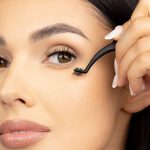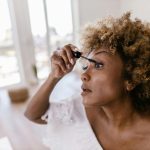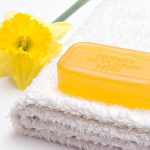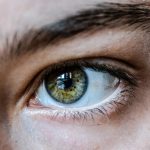The properties and effectiveness of glycerin. Does it dry out the skin?
many cosmetics compositions contain glycerin as it impacts their performance as well as consistency. However, it is a pretty controversial ingredient – some say it’s deeply hydrating, others – that it’s overdrying for the skin. Which is true? What effect does glycerin have in cosmetics?
Glycerin, sometimes called glycerol, is a trihydroxy alcohol. It is a by-product of the soap-making process. It is a thick, odourless, and colourless liquid with a sweet taste. It is soluble in water and alcohol. A popular ingredient of body, face and hair products. It can be found in creams, hair masks, shampoos and conditioners. Due to the method of extraction, glycerin can be divided into natural and synthetic. The former is obtained from soap, and the latter from propylene, a derivative of gasoline.
Glycerin’s cosmetic properties
It is a widely popular and very cheap material used for the production of cosmetics. It absorbs water very well and doesn’t dissolve in fats but, on the other hand, fats dissolve in it easily. Its properties are used in moisturizers and chapsticks as it prevents drying and has a positive impact on their formula. It’s a preservative that makes microbial activity negligible. Glycerin penetrates the deepest epidermal layers, facilitating the transport of active substances into the skin.
Thanks to glycerin, cosmetics are capable of:
- transporting water to the epidermis and maintaining its levels,
- ensuring long-term hydration and nourishment,
- enhancing firmness and elasticity of the skin,
- preventing wrinkle and furrow formation,
- protecting hair ends against splitting,
- accelerating skin’s regenerating processes,
- give the skin a healthy and natural glow.
The use of glycerin in cosmetics
Glycerin is used in:
- Body and face moisturizers – binds water within the epidermis and ensures long-term hydration of the skin, even for up to 24 hours. Enhances elasticity and smooths the skin.
- Hand and foot creams – softens the rough epidermis, soothes irritation, heals wounds.
- Mature skin creams – leaves skin smooth and elastic, smooths furrows and wrinkles. Promotes regenerative processes and moisturizes even extremely dehydrated skin.
- protective creams – works great during winter as it protects against harmful environmental factors such as cold and wind.
- hair products – strengthens and conditions weak hair ends, prevents hair loss and makes hair shinier.
The glycerin used in the beauty industry is obtained synthetically but it doesn’t have any impact on the human organism. If the glycerin used in a product is of plant origin, you can find it under the name Glycerin, if it’s of animal origin – it can be found under Glycerin vegetal. Manufacturers are not required to provide information on how the ingredient was made.
How to use glycerin?
You can get it in your pharmacy in pure form as it’s rather low-priced and easy to use. Add it to your DIY hair mask or create an eyeshadow base for your makeup. Mix it with water in a ratio of 1:3. Glycerin works well in the care of every skin type but it’s most effective for dry, dehydrated, mature and atopic skin.
Glycerin is an excipient, used in products in the right concentration, harmonizing with other constituents such as oils. This way, it supports the natural hydrolipid barrier of the epidermis.
Is glycerin safe?
It is non-toxic and has a neutral effect on the organism, however, there are cases of allergic reactions. This is an individual reaction of every skin. In the case of sensitive skin, cosmetics with the addition of glycerin are much safer than the ones with paraffin. In concentrations of 5 to 15%, it is responsible for proper skin hydration.
Glycerin at concentrations of 25%+ has antiseptic and highly drying qualities – it absorbs water from within the epidermis and prevents absorbing water from the environment. It’s very unlikely you find a product with such high glycerin concentration.








